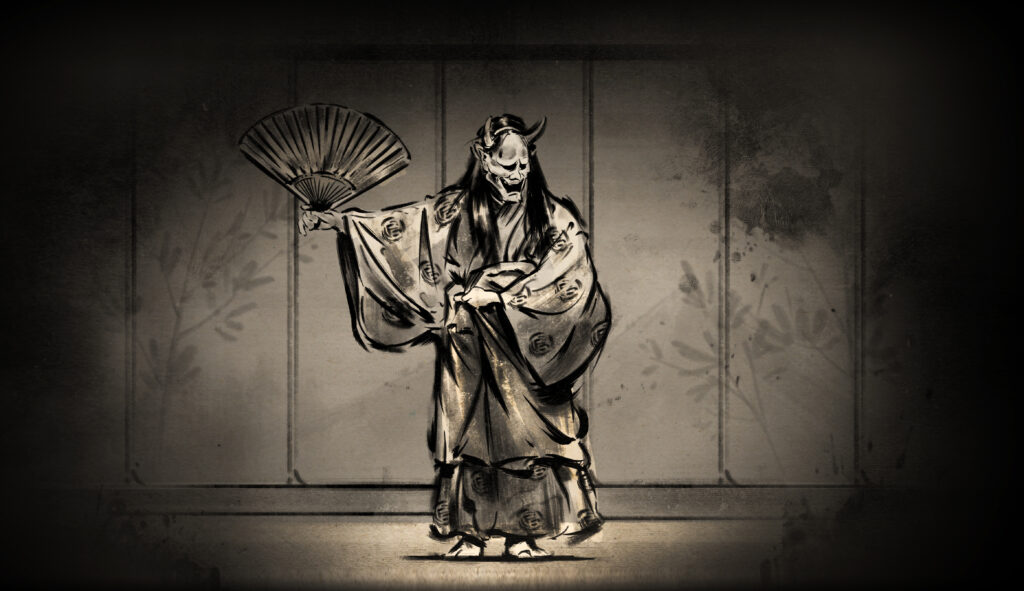
Noh theater is a traditional Japanese performance art that has been practiced for centuries. It remains almost unchanged from its beginnings in the 14th century, even today. The masked performers, intense emotions, and slow pacing of Noh make it a unique experience.
The roots of Noh lie in dance drama and festival drama performed at shrines in the 12th and 13th centuries. However, the playwright Zeami (1363-1443) popularized and formalized it. Noh was refined further in the years leading up to the Edo period.
Once the Edo period dawned, the Tokugawa shogunate made Noh its official art form. Noh theater became the entertainment of the elite—a ceremonial art form performed for the samurai class by professional actors. There were public Noh performances for general audiences to watch as well. All Noh actors were traditionally male, but women have been on the stage since the 1940s.
Unlike kabuki, Noh is solemn, restrained, and even sluggish. Performances feature relatively little dialog. Instead, the audience is expected to become lost in the emotions of the play.
Noh presents one all-important emotion dominating the main character of the performance, and often focuses on a historical personage returning to the site of the most important event of their life. The play may go in a number of directions, including a re-enactment of a warrior’s death, following someone’s descent into madness and grief, or a myth about a shrine’s founding.
Only the main character wears the iconic Noh mask. Each mask is hand-carved and conveys what kind of character is being portrayed. A talented actor can use the three-dimensional mask to show a variety of emotions through the way he holds his head. Every movement in a Noh performance is choreographed, much like ballet.
There are about 2,000 surviving Noh texts and about 230 are still being performed by modern artists. It is considered an ancient, traditional, and very refined form of theater.
Tale of Ronin takes place at the height of Noh’s popularity as the art of samurai. The player character may associate it with better times or use his knowledge of it to place himself above the masses. However, as it becomes clear how difficult it is to regain a position as an employed samurai, Noh and the warrior culture it is associated with may take on a new meaning.